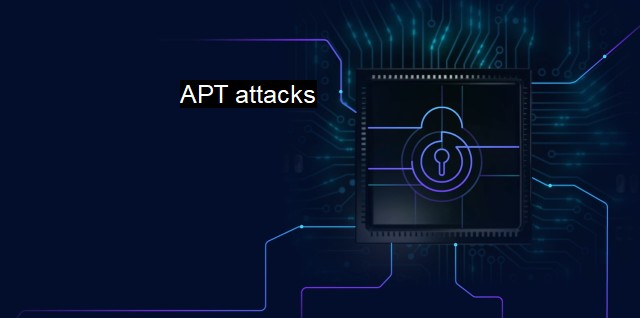What are APT attacks?
Rising Threat of Advanced Persistent Threats in Cybersecurity: A Deep Dive into Sophisticated and Coordinated Cyber-Attacks
APT attacks, or Advanced Persistent Threat attacks, refer to a type of cyber-attack in which an unauthorized user gains access to a system or network and remains undetected for an extended period. The defining characteristic of APT attacks is not just the sophistication or the potential damage it can cause, but more about the persistent nature and the objectives of the stealthy operation.In terms of cybersecurity, APT attacks pose a significant challenge. APT attackers tend to be well-resourced, highly skilled and relentless. They are often backed by large organizations or nation-states that possess the time and funding necessary to carry out such extended and complex attacks. A common tactic used in APT attacks is the slow, steady siphoning of information. Since these intrusions involve complicated strategies and techniques, they can evade the traditional defenses of even the most prepared entities.
Unlike more common cybersecurity threats, such as ransomware or phishing, that seek immediate gains, APT attacks pursue long-term objectives. These often deal with stealing sensitive data or intellectual property, but they can also seek to cause persistent harm or disruption to the target’s operations over time. Industries particularly vulnerable to APT attacks include defense industries, manufacturing, public sectors, and finance due to the high-value information they handle.
APT attacks typically start by exploiting system vulnerabilities, spear-phishing or compromising third-party networks to gain initial entry. Once they gain access, they avoid detection and set up backdoors to maintain persistence. This allows them to infinitely access and manipulate the target network, usually carrying out malicious actions undetected. This initial compromise may lead to multiple stages of an attack, complicating the traceback process and making caused damage nearly irreversible.
Therefore, tackling APT attacks requires a more proactive, layered approach beyond traditional antivirus software's capacity. Machine learning algorithms that learn patterns of usual network traffic and user behavior have proven to be effective. Unusual behaviors flagged by these systems can lead to more timely detection of a breach. Anomaly detection, application controls, data encryption, and more stringent controls over user access rights and privileges would go a long way towards securing systems. Security information and event management systems (SIEM) can offer real-time analysis of security alerts and the ability to correlate different security events that could indicate an APT.
Human vigilance remains extremely important in preventing these attacks. Staff training to recognize and respond to threats, especially spear-phishing attempts, is vital. Similarly, cyber intelligence about new vulnerabilities, new types of attacks, and breaches in other organizations can help the defenders stay one step ahead of potential threats.
The sophistication, persistence, and potential harm of APT attacks underscore the need for advanced protection measures in the current cybersecurity landscape. An effective APT response strategy emphasizes prevention, early detection and damage control. This might involve substantial investment, but considering the significant impacts an APT attack, the investment is justified. Remember, every enterprise has got threats that it needs to consider, and therefore, there's no one-size-fits-all solution. a strategy aimed at identifying the most potent risks, implementing practical security measures, and developing an effective response approach forms the most viable defence protocol against advanced persistent threats.

APT attacks FAQs
What are apt attacks?
Apt attacks (Advanced Persistent Threat) are sophisticated cyber-attacks that target specific individuals or organizations for extended periods of time.What is the purpose of an apt attack?
The primary goal of an apt attack is to gain access to sensitive information such as intellectual property or personal identifiable information (PII) for financial gain, espionage or other malicious purposes.How can one detect and prevent apt attacks?
Detecting and preventing apt attacks requires a multi-layered approach including advanced antivirus software, intrusion detection systems (IDS), firewalls, network segmentation, and user education to identify and respond to suspicious activity.Who is at risk of an apt attack?
Any organization or individual with valuable information such as government agencies, financial institutions, healthcare providers, and businesses dealing with proprietary information are at risk of apt attacks.| | A | | | B | | | C | | | D | | | E | | | F | | | G | | | H | | | I | | | J | | | K | | | L | | | M | |
| | N | | | O | | | P | | | Q | | | R | | | S | | | T | | | U | | | V | | | W | | | X | | | Y | | | Z | |
| | 1 | | | 2 | | | 3 | | | 4 | | | 7 | | | 8 | | |||||||